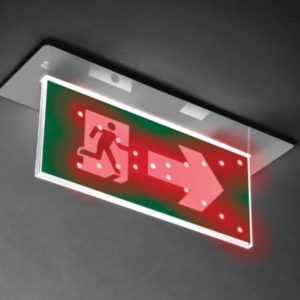Fire safety
One in four universities received complaints from students and staff on fire safety
Research conducted by Eaton, a power management company, suggests that universities need to invest more in existing technology that will improve fire safety for students and staff, as reported on IFSEC Global.
 The research consisted of 76 universities across the UK, to investigate how universities accommodate to fire safety standards.
The research consisted of 76 universities across the UK, to investigate how universities accommodate to fire safety standards.
One in four universities received complaints on fire safety or building evacuation. This could be due to the high numbers of institutions only abiding to the minimum expected standard required by regulation in the UK.
Emerging technologies for fire protection systems
Modern universities that invest in equipment that caters to the demand for 24/7 access to workspaces such as, electrical devices and energies, should also and more importantly, invest in existing technology to improve fire safety.
This is because previous research has revealed that 54% of all fires in the UK were caused by an electrical defect, considering potential consequences from electrical faults and having an effective emergency procedure is can minimise this. Examples of existing technologies for fire suppression and fire detection such as:
- Novec 1230 Clean Agent.
- Class 3 Water Mist.
- Exit Marketing Audible Notification.
- Video smoke Detection.
- Integrated Voice Evacuation and Messaging System.
Arc Fault Detection Devices (AFDDs) have the ability to digitally monitor the wire for specific frequencies that can indicate an arc fault and are considered the best practise in circuit protection, however 63% of responding universities said they do not have AFDDs put in place.
The 18th edition of the IET Wiring Regulations 2018 includes recommendation for the installation of AFDDs as a solution to decrease the risk of fire due to the effects of arc fault currents.
Despite there being 72% of universities that communicate their evacuation procedures proactively through written mediums (66% through passive written materials such as posters and 64% through passive digital mediums such as websites), 92% of the universities said they do not have an adaptive evacuation signage in place.
Adaptive evacuation signage are useful in university institutions because they use digital technology to switch between a number of predefined routes in the event of a fire, to guide people towards the safest available exit.
Although there is a high number of universities that focus on the evacuation of their staff and students in the event of a fire, there are currently no regulations to also support the implantation of technology which also helps individuals exit a building efficiently, such as Adaptive Evacuation Signage. Only 16% of universities surveyed said they plan to implement them in the next three-years.
Segment Marketing Manager at Eaton, Marc Gaunt, commented: “adaptive technology that responds to specific circumstances to ensure safe evacuation of occupants is particularly important for universities, considering the size and complexities of many campus buildings.”
“New technologies are available that help avoid congestion or unintentionally guiding people towards the threat when trying to evacuate. In a university, where the safety of students is utmost importance, its imperative facilities managers are continually educating themselves on the newest evacuation technologies and that they are sharing knowledge with key stakeholders.”
One in four universities received complaints from students and staff on fire safety
Research conducted by Eaton, a power management company, suggests that universities need to invest more in existing technology that will improve fire safety for students and staff.
Samah Ahmed
SHP - Health and Safety News, Legislation, PPE, CPD and Resources Related Topics
Workers facing uncertain future coupled with health and safety risks, new IOSH report says
Legionella Management: Who can be appointed as RP, DRP, AP or CP?
James Macpherson on risk: ‘More of the same won’t work’

